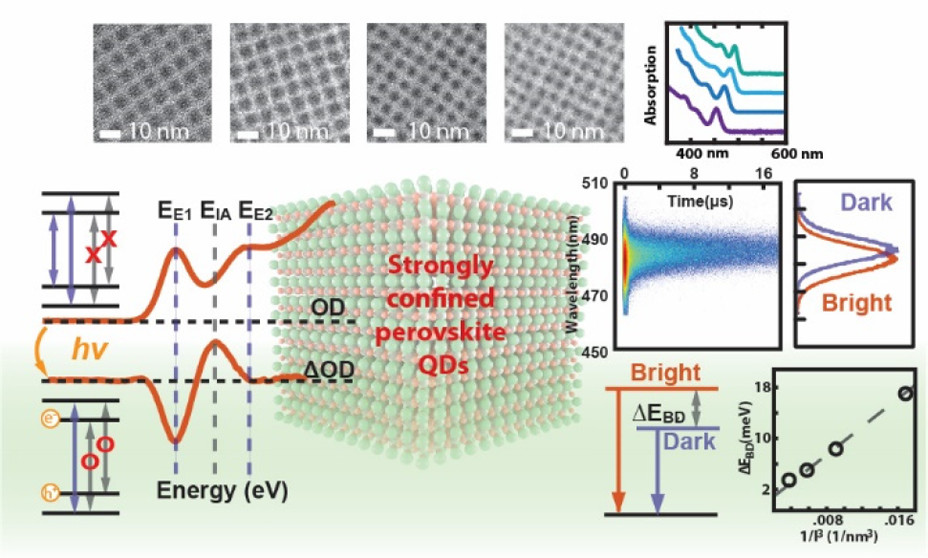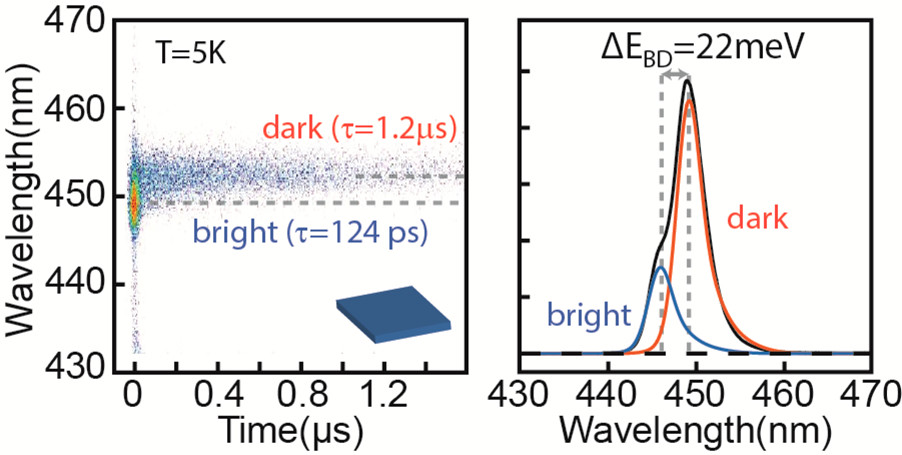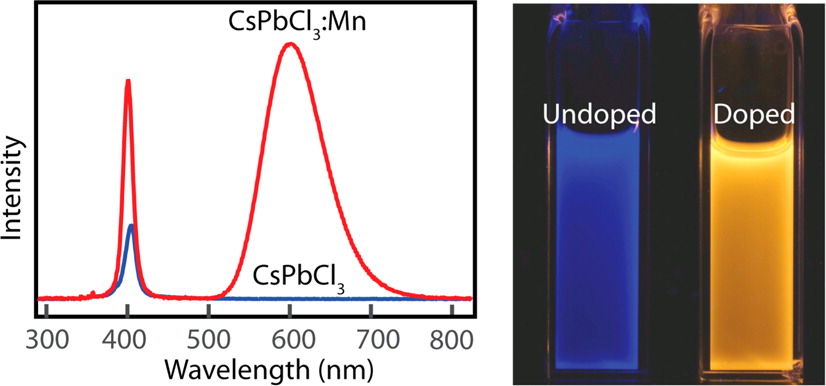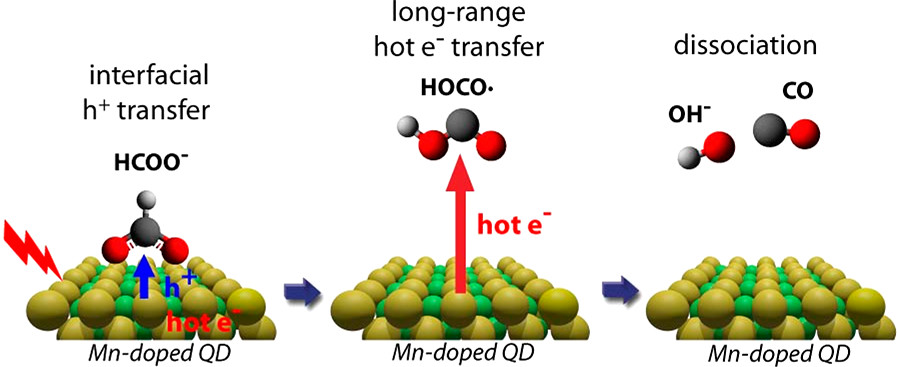
Photophysics of Strongly Confined Perovskite Quantum Dots
Semiconducting metal halide perovskite (MHP) nanocrystals have emerged as an important new class of materials as sources of photons and charges. We investigate strategies for fine chemical and structural control of these materials and their photon emission and charge carrier generation properties.

Utilizing Dark Excitons in Perovskite Quantum Dots
Dark excitons in perovskite quantum dots are long-lived and intensely emitting lowest-energy exciton levels, accessible at low temperatures. We study how to control their chemical structure and quantum confinement to access and utilize this state in photon emission and hot charge carrier applications.

Charge Transfer and Magneto-Optic Properties in Mn-Doped Semiconductor Nanostructures
Doping nanocrystals with paramagnetic ions introduces new optical, electronic, and magneto-optic properties. We explore synthetic strategies and photophysical properties of doped nanostructures for photonics and photoinduced chemical reactions.

Hot Electron Induced Photocatalysis
We study generation and application of hot electrons in photoinduced chemical processes, particularly exciton-to-hot electron upconversion in doped quantum dots. Applications include CO2 and N2 reduction.